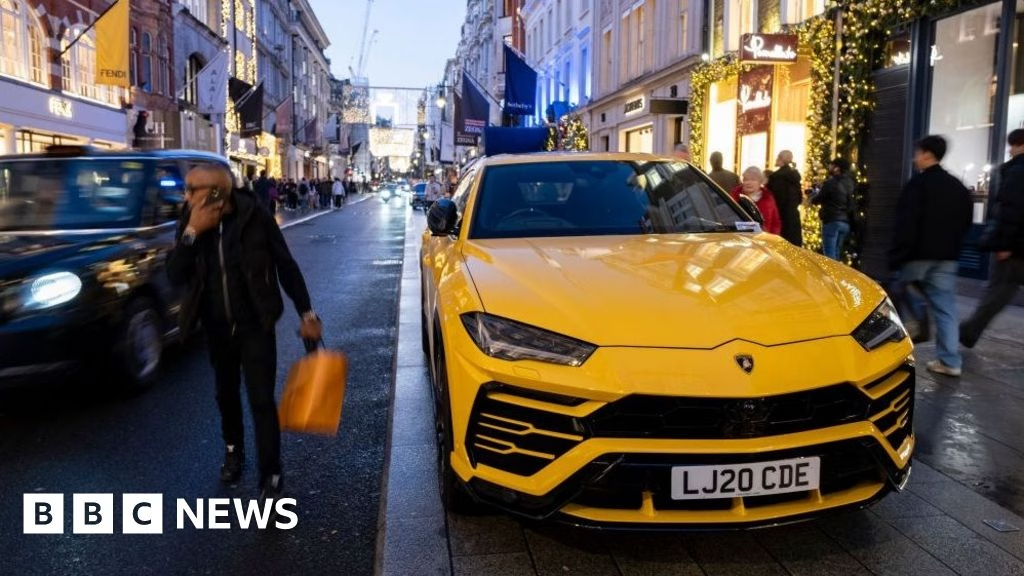<
div>
e9ee8ea585f1.jpg.webp) Reuters
ReutersAcross the globe more and more Sports Utility Vehicles (SUVs) are being spotted on – and off – the roads.
This is despite predictions from the United Nations of an inevitable pivot towards smaller and more environmentally friendly vehicles, because of the urgency of the climate crisis and the rising cost of living.
However, that pivot has not materialised: globally, 54% of the cars sold in 2024 were SUVs, including petrol, diesel, hybrids and electric makes. This is an increase of three percentage points from 2023 and five percentage points from the year before, according to GlobalData.
Of the SUVs which are now on the road – both new and older models – 95% are burning fossil fuels, according to the International Energy Agency (IEA).
Manufacturers, however, say their new fleets of such cars are increasingly becoming electric, and that not all SUVs now being sold cause an increase in emissions.
(live)(dfb73a40-fb74-11ef-8c03-7dfdbeeb2526).jpg.webp) A vote was held for residents in Paris in 2024 over raising parking fees for SUVs to reduce emissions and increase pedestrian safety
A vote was held for residents in Paris in 2024 over raising parking fees for SUVs to reduce emissions and increase pedestrian safetySUVs are hard to miss. They are heavy and larger with spacious interiors, higher ground clearance and a high driving position with a better view of the road, although smaller versions are also on the market.
Environmental campaigners such as Greenpeace see SUVs as one of the villains of the climate crisis and argue that their manufacturing consumes significant resources given their size.
Experts also say they require larger batteries to power their electric versions, which then further increases the demand for critical minerals, putting even more pressure on the planet.
Momentum was thought to be with smaller, energy-efficient electric vehicles. But the sales of standard-sized electric vehicles (EVs) has actually decreased in major markets such as Japan and Germany, and their sales growth has slowed in India.
And in Europe, sales of SUVs have outpaced those of EVs despite indications more than half a decade ago of an opposite trend. In Europe in 2018, 3.27 million small hatchbacks – both those powered by fossil fuels and those by electricity – were sold while 2.13 million were sold in 2024, according to GlobalData.
Its sales forecast manager Sammy Chan said: “This is partly because of the SUV alternatives being offered in smaller [sizes] whose sales in Europe have now grown to nearly to 2.5 million in 2024 from 1.5 million in 2018.”
China saw the largest sales of nearly 11.6 million SUVs in 2024 followed by the US, India and Germany, according to GlobalData.
(live)(20048540-fb74-11ef-a62d)e9ee8ya5855f1.jpg.webp) What is driving this SUV growth?
What is driving this SUV growth?Industry experts say people’s purchasing power has been improving in many fast-emerging economies, making SUVs the likelier choice of car.
“Manufacturers respond to consumer demand and, increasingly, drivers are attracted to dual purpose vehicles given their practicality, comfort and good view of the road,” said Mike Hawes who is the chief executive of the Society of Motor Manufacturers and Traders (SMMT).
Automobile industry analysts also say that manufacturers are attracted to high profit margins from SUVs: they can make more money from SUVs even though they make fewer vehicles.
“It is the industry that has driven the demand through huge marketing and advertising campaigns in recent years,” said Dudley Curtis, the communications manager at the European Transport Safety Council.
“SUVs offered the industry a simple way of charging more for a vehicle that does the same thing [as others],” he said.









